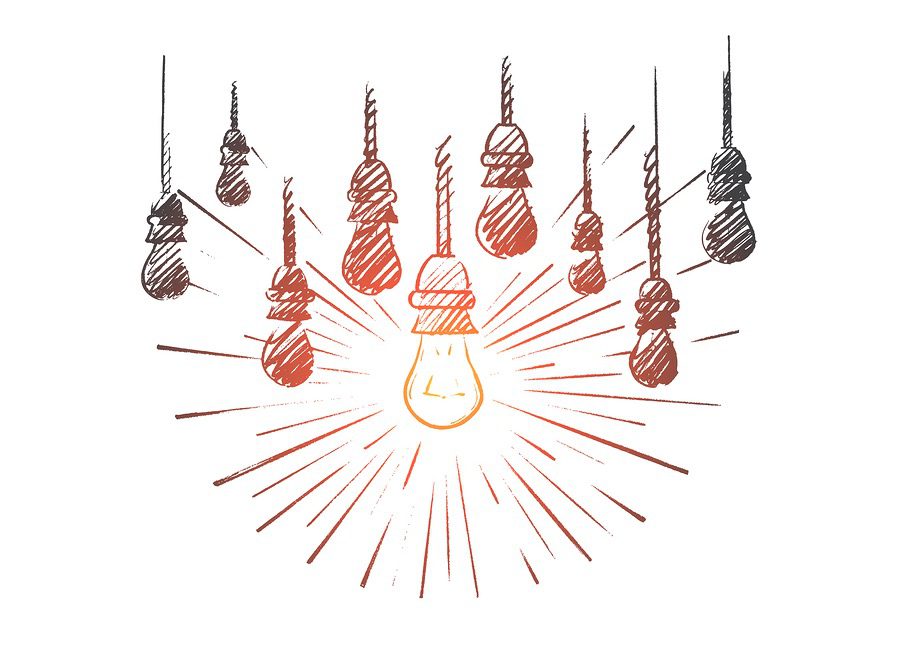 Are you a sports fan? If so, you’re likely amazed by NBA superstar, LeBron James. He’ll soon be finishing up his fifteenth season as a professional basketball player (that’s an eternity for a pro athlete) and he’s still the best player on the planet. Incredible!
Are you a sports fan? If so, you’re likely amazed by NBA superstar, LeBron James. He’ll soon be finishing up his fifteenth season as a professional basketball player (that’s an eternity for a pro athlete) and he’s still the best player on the planet. Incredible!
Where are we going with this? Well, email is kind of like the marketing version of LeBron — it’s been around forever, but it’s still the best, most cost effective way to promote your business.
But this is only true if your emails actually get read by your subscribers. And for your emails to be read, they need to be opened first. And they’ll only get opened if you have a stellar subject line.
Take a look at these stats:
- 33% of people decide to open emails based solely on the subject line.
- Emails are opened 18.7% less when the word “newsletter” is used in the subject line.
- Including the word “free” in the subject line boosts open rates by 10%.
So what does this all mean? It means that your subject line is important and if you participate in email marketing — on any level — you owe it to yourself and your company to get it right.
We’re here to help you do just that!
Useful Terms You Need to Know
We want to start out by defining a few of the terms we’ll use throughout this guide. You may already be familiar with them. If so, feel free to skip to the next section. But if you’re brand new to email marketing, let’s get you started on the right foot with the following definitions:
Open Rate
The open rate measures how many people opened an email and is typically shown as a percentage. For example, if you email 100 people and 10 of them open your message, your open rate would be 10%. Every industry is different, but the average email open rate is roughly 25%.
Call-To-Action
A call-to-action (CTA for short) is a general marketing term that refers to any statement; written, spoken or otherwise, that prompts the audience to take immediate action. In email, the CTA is any link that you add to the content of your messages in order to drive traffic to a specific web page.
Click Through Rate
The click through rate (CTR) measures the amount of people who open your email and click on the included link. Referring back to our previous example, if 10 people opened your email and 2 of them clicked on your link, your CTR would be 20%. The average CTR across all industries is 4%.
Bounce Rate
In regard to email, the bounce rate is the percentage of names on your subscriber list that were sent your message, only to have it returned by the recipient’s server. If you emailed your list of 100 people, but two messages were returned, your bounce rate would be 2%. Ideally your bounce rate should never exceed 8% to maintain a healthy sending reputation.
Bulk ESP
A bulk ESP (short for Email Service Provider) is a company that offers bulk email marketing services to customers. Every provider is different, but most bulk ESP’s come with well-designed email templates, automation capabilities, and detailed reporting features. Marketers use bulk ESP’s to email large subscriber lists in an ethical and professional manner.
Now that we have the basic terms covered, let’s discover how to craft killer subject lines.
Building the Foundation for a Successful Email Subject Line
Before you write anything, you need to make sure that you have a firm understanding of the purpose of a subject line. Many marketers will tell you that it has one job and one job only: to entice your recipient to open your email. But, in our opinion, this is only half true.

Yes, your subject line should be crafted to encourage opens. If it doesn’t, your entire email campaign is doomed and you’ll never see any semblance of adequate ROI. But it must also “frame” your email correctly and put your recipients in the proper state of mind.
For example, if your subject line reads, “5 Tips to Reclaim Your Summer Beach Bod,” you may receive a lot of opens — assuming you’ve sent this email to an audience that’s interested in this topic. But if the content of your email focuses entirely on selling your latest fitness course rather than sharing the five tips your audience is expecting, your click through rate will be very poor and you won’t receive a high ROI anyway.
It’s never a good idea to lie to or confuse your audience. Instead, always make sure that your subject lines match the content of your emails. In the next section, we’ll discuss a few specific techniques you can use to increase your open rates without stooping to cheap and spammy tactics.
Crafting the Perfect Email Subject Line
 Let’s talk about the content of your subject lines. According to AWAI, a trusted leader in copywriting education, all subject lines should include the “4 U’s:” Useful, Ultra-Specific, Unique, and Urgent. Let’s dive into each of these individually.
Let’s talk about the content of your subject lines. According to AWAI, a trusted leader in copywriting education, all subject lines should include the “4 U’s:” Useful, Ultra-Specific, Unique, and Urgent. Let’s dive into each of these individually.
Useful
If you want recipients to actually open and read your emails, you have to give them a compelling reason to do so. That means your emails need to provide something useful; something that your readers will find beneficial, and you need to state what that is in the subject line.
What will recipients get by opening your email? A bit of useful information? A discount coupon? Something else? Before you do anything, think of a compelling reason why anyone on your list will want to read what you’re sending — then add that idea to the subject line.
It’s important to note that you can’t possibly send useful content to your email list on a regular basis without first understanding your unique audience and the specific content they want to receive. If you haven’t yet crafted detailed buyer personas and spent time getting to know your tribe, this is where you should start.
Ultra-Specific
In general, your subject line is not the place to be cute and/or clever. Clarity and specificity almost always win. People are busy and if they have to guess what your email contains or aren’t immediately sure of the benefits of opening your message, they won’t. There are just too many other things that they could do with their time (not to mention emails in their inbox).
A great way to add specificity to your subject lines and boost open rates is to include numbers.
For example:
“7 Ways to Grow Your Email List,” will generally see a higher open rate than, “Grow Your Email List.” The use of the number seven in the subject line helps the recipient better understand what they’ll get by opening your email: seven ways to grow their email lists. It’s more specific and therefore more trustworthy.
Another tactic you can use in regard to specificity is personalization. This could be as simple as including the recipient’s name is the subject line, or using relevant, location-specific details. Observe:
“Mary, Get 25% off at Burger Joint in Rocklin Today”
This example uses both the recipient’s name and includes a location (Rocklin) in her area. We also included a number (25%) for some tasty, ultra-specific goodness.
Unique
There are approximately 269 billion emails sent every single day. That’s a lot of “noise” competing for attention! One of the very best ways to cut through that noise is to be unique.
Why should anyone read your email if they received something similar last week? Send fresh cnotent, something they haven’t received before (at least not from you) and you’ll stand a much better chance of them actually opening — and reading — your emails.
And though this may sound difficult, it’s really not. Let’s pretend you own and operate a business in the beauty industry, selling high-end makeup products. And as the spokesperson for your brand (Makeup by Mia), you post makeup tutorials on YouTube to help promote your company and products.
In your next email campaign announcing your latest tutorial, you could use a subject line like:
“Makeup by Mia’s 5 best tips for covering up blemishes”
Though your list may have received emails on this topic before, this subject line is still unique because it was sent by you.
Urgent
Anytime you can add urgency to your subject line, it’s a good thing. How can you convince your reader to open your email now rather than later? Is there a deadline? Or are you providing information the reader will want to implement right away?
The easiest way to do this is through limited-time sales and offers:
“40% Off…This Weekend Only!”
If you can find a legitimate way to add an element of urgency, you’ll most likely see a boost in open rates.
You don’t always need to use all four U’s to craft a compelling subject line; normally three out of four is more than enough.
Additional Tactics

The 4 U’s provide the basis for all effective email subject lines. But there are a few other related tactics you can employ to help increase your opens even more.
- Use a Familiar Sender Name: When your audience knows and likes the company emailing them, they’ll be much more likely to open and read the messages. Make sure to use a consistent sender name that subscribers will recognize.
- Segment Your List: The modern consumer wants personalized experiences with their favorite brands. One of the best ways to provide this to your audience is to segment your list into different groups based on location, age, gender, etc. Your recipients are much more likely to open your emails if they feel like they were written exclusively for them.
- Use Power Words: These are words that have been proven to trigger an emotional response from readers. They include words such as “Discover,” “How To,” “Free,” and “New.” Try adding a few of these to your subject lines and see if it helps.
- Use AI and Automation: Sometimes timing is the most important factor in whether or not your emails get read. Combat this by using the AI and automation features included with your ESP. Robly’s patent pending AI will track when each subscriber on your list is most likely to open your email; and send your message at that exact moment.
- Create Curiosity: Curiosity can be incredibly persuasive. To peak the curiosity of your recipients, try to ask an intriguing question such as, “Bob, is this the answer you’ve been searching for?” You can also induce curiosity by telling your list NOT to open your email in the subject line: “Whatever you do, do NOT open this email.” This little reverse psychology trick can work well for the right list and content.
What to Avoid
Just like there are tactics you can use to supercharge your email subject lines and boost your open rates, there are also some things to avoid.These mostly surround tactics that appear spammy and untrustworthy.
- The Use of All Caps: Not only does this look incredibly spammy, but who wants to be yelled at all the time? We sure don’t! SO AGGRESSIVE. So, please, ease up on the capital letters.
- Excessive Punctuation: In the same vein, the use of multiple punctuation points (aside from the occasional ellipses) at the end of your subject lines will really rub your audience the wrong way. You know what we mean!!!!!!!
- Poor Spelling: If you can’t be bothered to spell the few words in your subject line correctly, why should any of your recipients take the time to read your emails? Be professional and use spell check.
- Impossible Promises: Making promises is a great way to increase your open rate. But making promises no one believes you can deliver on will get your email sent to the spam folder in a flash. Case in point: “The 6 Week Millionaire: Are You Ready to Get Rich?”
Length
The content you include in your subject lines is obviously important. But character count needs to be taken into consideration, too.
In general, shorter is better. People have short attention spans and so many of them access email on their smartphones, where longer subject lines tend to get cut off.
Aim for 55 characters or less. This should give you enough room to include the 4 U’s and make your subject line seem enticing, while avoiding any awkward cut-offs.
Optimize Your Email Subject Lines

By now you’ve done the hard work of crafting a few potential subject lines for your next email. They each include at least 3 of the 4 U’s, you’ve made sure your sender name is recognizable, and you’ve even set up your bulk ESP’s automation and AI features to send your message at the optimum time. Great job!
But how do you actually choose which subject line to use? In short, you don’t have to. Your next task is to run an A/B test, also known as a split test, on a small segment of your list to determine which subject line your audience likes more.
What’s an A/B Test?
An A/B test is a simple experiment marketers run every day. Most bulk ESP’s, including Robly, have built in features to make this whole process incredibly simple.
Basically, you choose two potential subject lines to test against each other. Then, two identical emails (except for the differing subject lines) will be sent to a small, test portion of your list and the results of each (open rates, click through rates, etc.) will be tracked.
Analyze the Results
Normally the subject line that produces the higher open rate will be the winner. But it’s important to analyze the click through rate as well.
For example, let’s say email “A” results in a 40% open rate and a 10% click through rate. Email “B”, on the other hand, produces a slightly smaller open rate of 37% but a much better click through rate of 20%. In most cases, you’ll probably want to go with email “B” despite it having a lower open rate.
The truth is, nobody really knows which subject line will perform better until they’re all tested and the data is analyzed. So do yourself a favor and craft multiple subject lines. Then run A/B tests to determine what performs best.
Your Turn
Your email’s subject line is incredibly important and will have a direct effect on your open rates, click through rates and overall success with email marketing. So make sure to put in the effort and write the best ones you can.
Remember to use the 4 U’s — Useful, Ultra-Specific, Unique and Urgent — when crafting subject lines and A/B test your favorites against each other to determine a winner. The more subject lines you write, the easier the entire process will become.
What’s been your biggest challenge in writing effective email subject lines? Let us know in the comments!
Jacob Thomas is a freelance copywriter and content marketer based in Bend, OR. His professional writing approach has helped numerous businesses gain more traffic, leads, and sales. To contact Jacob, visit www.jtcopywriting.com.

